Server virtualization has been around for quite some time now, the first time I came across it was about 10 years ago in an attempt to reduce the roll out time and overhead for setting up Microsoft Technical training rooms:
The existing process was quite involved taking two dedicated staff members to ensure the training machines were rebuilt and ready for any upcoming courses, utilizing virtual machines allowed for a room to be readied from a central source therefore allowing the technical staff to focus on other aspects of their role. Whatever the motivation for an organization to move to virtualization, be it to reduce power consumption, as part of a disaster recovery plan or simply to make better use of current server platforms, this blog will demonstrate how to create a Hyper V virtual machine as a host for an iCR transcoder.
Why Hyper V? Simply because it’s comes bundled in Windows 2008 Server and is therefore free…
Step 1:
The first step is to configure your host machine, if Hyper V is not already installed on your Windows 2008 Server, open Roles within Server Manager and add Hyper V as a role; the virtual machine host software will be installed.
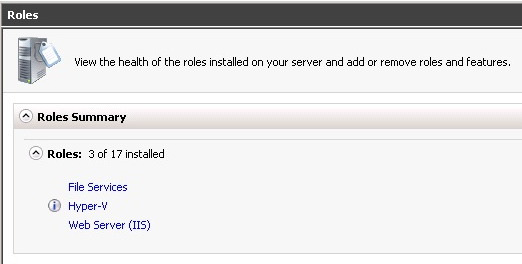
Step 2:
Now to create a new virtual machine, open Hyper V Manager from the Start Menu. To start, click Virtual Network Manager in the Actions panel on the right hand side of the Manager Window and add a new virtual network adaptor, this will allow our new virtual machine to communicate with the outside world via the host computer NIC, assign it a name which will later be displayed during the virtual machine setup, select the host network interface the virtual interface should link to and click ok.
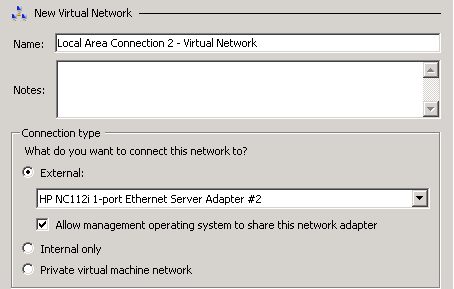
Step 3:
Next is to create a new virtual machine, again in the Actions panel click on New and chose Virtual Machine…
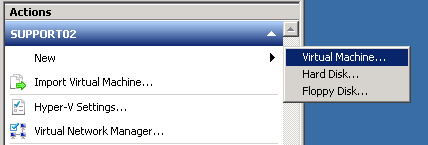
Step 4:
This will launch the New Virtual Machine Wizard, click next on the ‘Before you Begin’ window, in the next window you will be asked to specify a name and location for the virtual machine, complete with your desired settings and click next.
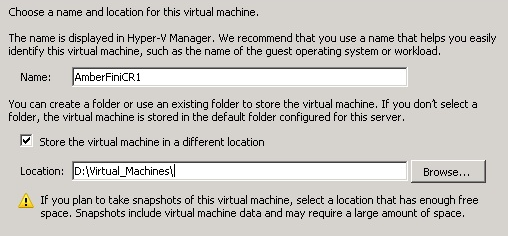
Set the amount of memory which should be reserved on the host machine RAM and allocated to your new virtual machine.

Click Next, now we connect the virtual machine to the virtual network adaptor we created in the first step.

Next you will need to create a virtual HDD for the virtual machine, by default the VHD will be given the same name as specified for the virtual machine, the location will default to the location of the virtual machine. I plan to use shared storage for my VM, therefore I will keep the VHD reasonably small.
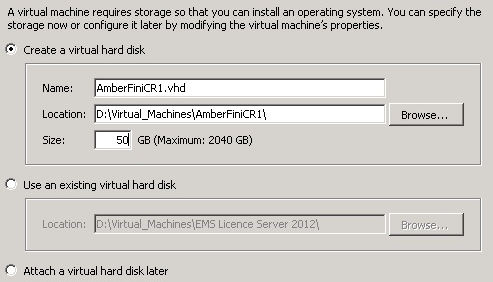
Finally, we need to decide how we will install the VM Operating System.
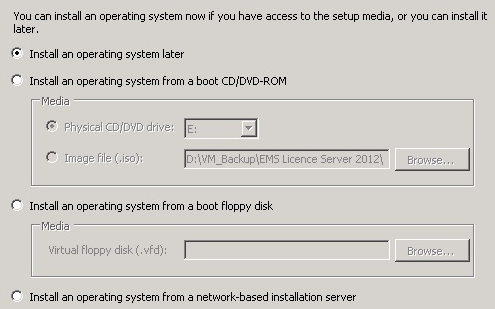
Click Next, review your settings and click Finish.
Despite having configured most of the VM settings using the Wizard, there is one other change required, the number of CPU cores available to the VM. To set this, right click on your newly created Virtual Machine and click settings, chose Processor in the left hand panel and configure the settings on the right hand side.
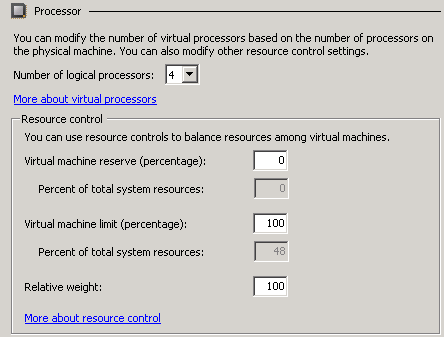
The number of required processors is dependent on the workflow you wish to implement, information on required resource for each workflow can be found in the iCR Hardware Recommendation document, contact us and request this document if you need assistance.
If you plan to run multiple VMs on one host machine you may need to configure the Virtual Machine Reserve and percentage resource settings, for now I will configure for one VM.
Once you are happy with your settings click OK, ensure your install media is available, either the DVD or the ISO image (either Windows 2008 Server R2 or Windows 7), and right click on the VM and click start. Hyper V will start the OS install on your Virtual Machine, follow the steps as you would with a standard Windows installation.
Taking a Snapshot:
If you plan to roll out further VMs within your environment you may wish to make a backup of this clean VM so you can quickly and easily roll out new virtual machines using this install as your base “Golden” template.
With the VM running, take a Snapshot of the current configuration by highlighting the VM in Hyper V manager and clicking Snapshot in the right hand panel. Once the snapshot is complete the menu will change and an Export option will be available, shutdown the VM andclick this new Export option, specify the backup location and click Export.
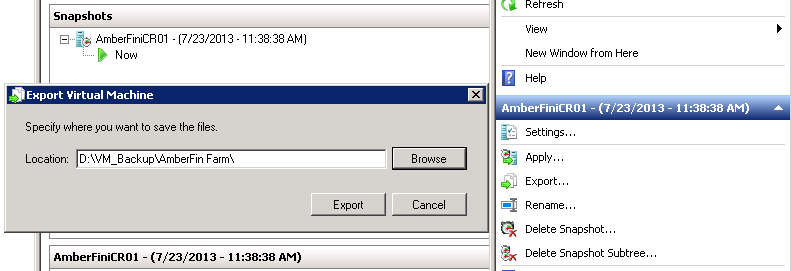
Your new VM is now backed up and ready to have iCR installed.
Copy the iCR installation file to the local drive of your VM, double click and run through the install process. Let us know if you would like to test iCR within a virtual environment, we should be able to supply you with a 14-day trial licence so you can play.
Featured in: Dalet AmberFin | Transcoding |
With 30 years in the industry, Bruce looks after Media Technology for Dalet. An engineer who designed antennas, ASICs, software, algorithms, systems and standards, Bruce is best known for being @MrMXF and you can get his book on Amazon.
More Articles By Bruce



